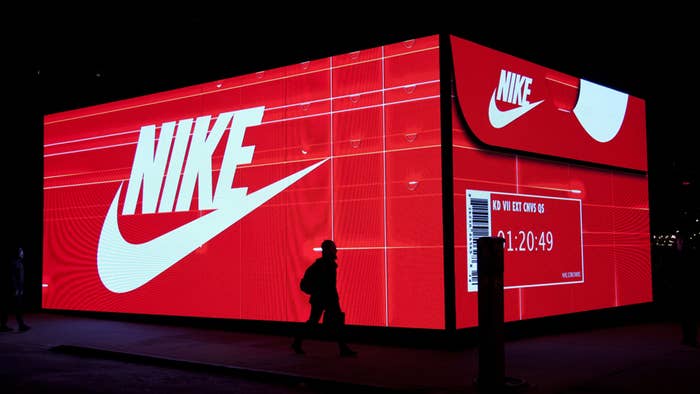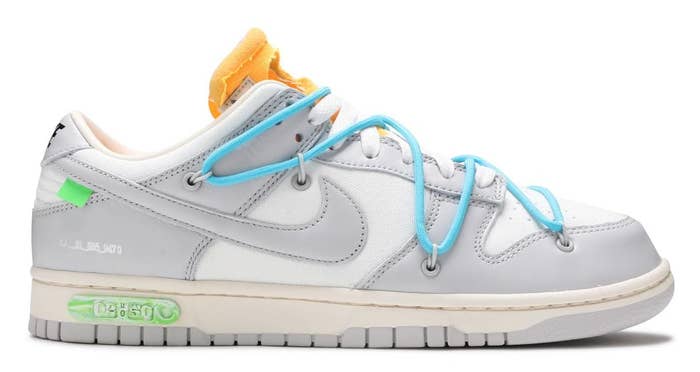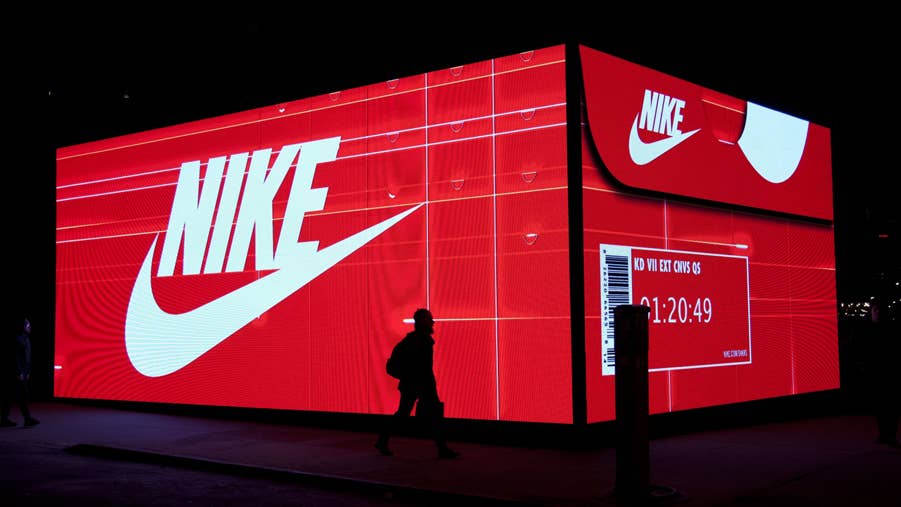
In an internal meeting at Nike last week, the company addressed the current state of the SNKRS app, the digital home of its most coveted product. While the app has been successful for Nike and is a key part of the company’s push toward more online sneaker sales, it’s also been a great source of frustration for a portion of its user base. SNKRS shoppers have grown accustomed to frequent failure due to the limited nature of the items available on the app.
Slides from a presentation accompanying the meeting, which were viewed by Complex, show that Nike is wary of alienating sneaker collectors through its launch tactics.
“We are at risk of losing our most sneaker-obsessed consumer,” one slide reads. It goes on to say that these shoppers are becoming disenfranchised and moving elsewhere as they view Nike’s limited releases as part of a hype machine. “High heat, hype is ‘killing the culture’ and consumers are migrating towards New Balance and smaller, independent brands,” the slide reads. The presentation also mentions luxury brands, which are becoming increasingly present in sneaker and streetwear markets, as competition.
The concerns, and much of the strategy cited in the meeting, extend to Nike’s “neighborhood” retail partners, which are the top-tier boutiques and collaborators that have access to its most sought-after sneakers.
During the meeting, SNKRS global VP Ron Faris attributed some of the fatigue from the app to the low perception of fairness among its users.
“Our community is becoming disenfranchised by our low fairness numbers,” he said. “Our fairness numbers are not where they should be. They’re at, like, the mid-20s; they need to be in the 80s.”
Instilling a sense of fairness in app users is a priority for Nike. A slide from an internal meeting in August included a global fairness mandate meant to “ensure 80 percent perceived member fairness through the lens of access, bot mitigation, inclusion, clarity, and accountability.” Faris, speaking last week, used an analogy of gentrification to describe the trajectory of sneaker collecting going from a subcultural activity to something more mainstream. That path, the SNKRS VP explained, has disaffected the groups who originally shaped the culture. Now, he plans to correct the course.
“We’re gonna shape the marketplace to reflect the community we serve,” Faris said. “Especially in Black and brown communities and Asian communities, so that we actually show and we actually give equity and inclusion to the communities that have been gentrified out and alienated by the resale market.”
The presentation from the meeting last week reveals just how big SNKRS is by referencing the kind of data from it that Nike seldom discloses. When reached by Complex, the brand did not have a comment on the figures or the contents of the meeting.
One slide shown in the meeting says the global number of active SNKRS app users increased 57 percent in the last year. That slide puts overall demand within the app at $1.69 billion. The same slide says that demand within SNKRS went up 70 percent versus last year and that Nike only met 7 percent of that demand in the past year. Nike has previously satisfied a bigger portion of the demand—the presentation puts that same number at 13 percent for 2019 and 2020.
Faris said during the meeting that these numbers are so low mostly because there isn’t enough product to meet demand. He illustrated how much the SNKRS user base has grown by saying that 300,000 people used to show up on the app for a launch day, where there might be 750,000 for some drops now. Faris said that the level of available product offered in the app now hasn’t caught up to meet the current level of demand.
“A lot of people think it’s because of bots,” he added, claiming that Nike does a good job defending against sneaker bots that seek to cheat online launches.
Faris said during the meeting that Nike plans to recalibrate demand by “redefining scarcity.” In illustrating this he gave the example of the Off-White x Nike Dunk Low release from this summer, a collection of 50 colorways that were released only on SNKRS via its exclusive access program. Through exclusive access, Nike sends users a push notification giving them the opportunity to buy a specific shoe, rather than asking them to enter a draw for the chance to buy. Faris said Nike released 500,000 pairs of the shoes via exclusive access.

Faris’ comments about the success of the Off-White release echo those made by Nike CEO John Donahoe in September during the company’s most recent earnings call, where he said the shoes were sold to the “most deserving” shoppers. The idea of these drops—described by Donahoe as “exclusivity at scale”—is to maintain an aura of rarity around a product while still fulfilling a meaningful amount of demand.
Nike’s plan to recalibrate demand is one of a handful of strategic priorities it has that are aimed at changing how it does business around SNKRS and neighborhood retailers. It also wants to create better content to engage with its audience, build more fair and fun experiences around launches, and work to include people who feel like they’ve been pushed out of sneaker culture.
“What does that mean for us?” Faris asked. “It means we must listen more. It doesn’t mean that we’re going to be dictating culture. It means our community must dictate the culture. And we have to listen to them.”

